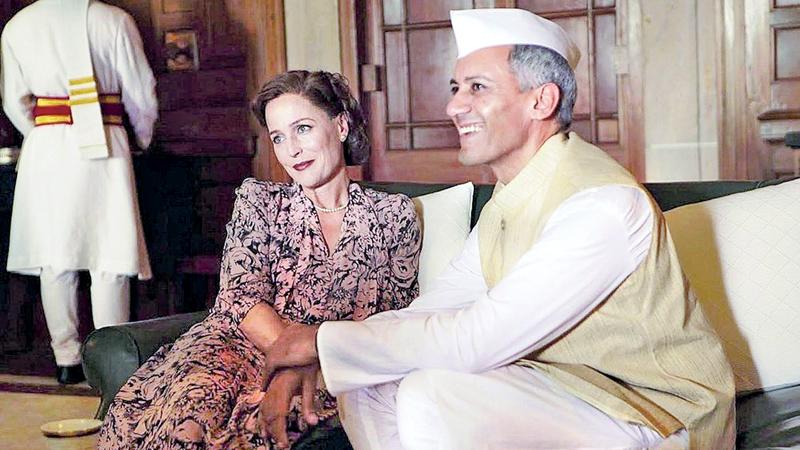
Set in the twilight of the British Raj, Viceroy’s House, shows how the ignominy of ‘Partition’ treacherously unfolded as the sun began to set over the most formidable colonial empire the world had ever known. Directed by Gurinder Chadha the film’s scriptwriting credits are accredited to Paul Mayeda Berges, Moira Buffini and directress Chadha.
The story unfolds in 1947, as Lord Louis Mountbatten, a close relative of the British royal family, arrives in India with his wife and daughter as Viceroy to India, to oversee the smooth transition of government from a British colonial administration to a self governing independent India. Mountbatten is compellingly played by Hugh Bonneville, his wife, Lady Edwina is portrayed by Gillian Anderson.
 The main current of the story is how the geopolitical machination called ‘Partition’ was covertly devised and speciously executed by the British at the cost of millions of Indians becoming victims of communal violence that results in death, carnage and a flood of internally displaced refugees. Affixed to the central subject of the film is also the love story of Jeet, played by Manish Dayal, and Alia played by Huma Qureshi who are staffers at the palatial residence of the Viceroy. Jeet is a Hindu from the Punjab state who is a valet to the Viceroy, and Alia, a Muslim girl, assigned as a translator to Lady Edwina. The history behind them and how they are made star crossed lovers, distanced by religion in a country their parents fought for the common goal of independence from the British is brought out beautifully in the course of this film, which shows the sophistication of boardroom politics unfold at the top, juxtaposed with the afflictions of the common Indian who must come to grips with the grim reality of the consequences of partition that gives birth to two separate states in the Indian subcontinent – India and Pakistan.
The main current of the story is how the geopolitical machination called ‘Partition’ was covertly devised and speciously executed by the British at the cost of millions of Indians becoming victims of communal violence that results in death, carnage and a flood of internally displaced refugees. Affixed to the central subject of the film is also the love story of Jeet, played by Manish Dayal, and Alia played by Huma Qureshi who are staffers at the palatial residence of the Viceroy. Jeet is a Hindu from the Punjab state who is a valet to the Viceroy, and Alia, a Muslim girl, assigned as a translator to Lady Edwina. The history behind them and how they are made star crossed lovers, distanced by religion in a country their parents fought for the common goal of independence from the British is brought out beautifully in the course of this film, which shows the sophistication of boardroom politics unfold at the top, juxtaposed with the afflictions of the common Indian who must come to grips with the grim reality of the consequences of partition that gives birth to two separate states in the Indian subcontinent – India and Pakistan.
Chadha’s film depicts Mountbatten as an unwitting pawn who is lured into effecting a plan that had been schemed well in advance to ensure the cardinal British strategy / policy of ‘divide and conquer then divide and rule’ finds new life in the Indian subcontinent. Both, Lord and Lady Mountbatten are depicted as two highly conscientious humanists who are agonized by the fate that had been written out for what was the jewel of the British Empire in consequence to the demands for independence. But, was that actually so, I dare to ask. Were the Mountbattens really, completely oblivious to the plan for partition that had been conceived by the uppermost power echelons of the British government? Chadha’s film does portray a highly romanticized picture about Lord Mountbatten and Lady Edwina. But, how much of it is historical truth I suppose is open for question. History after all is at best a narrative of facts from the past, available at a given point in time.
The unmatched Machiavellian ingenuity of the British to manipulate socio-political landscapes and engineer geopolitical outcomes to further their own interests comes out strikingly in Chadha’s work. Viceroy’s House is a must see film for every South Asian who is conscious of the postcolonial baggage thrust on this generation by the era of colonialism.
